Bowhunting can be a thrilling sport. This is because it pits your wits against those of your prey, with nothing in between. You need to get in close range in order to be able to take a shot, but you must do this without the animal detecting your presence and running off.
However, all of the technical information and the many options out there for you can make things pretty confusing when you are just venturing into the realm of archery and bowhunting. This article is to help you find your way. Read the 10 bow hunting tips for beginners below and you will find that they can be a big help to you.
Table of Contents
1. Finding the Right Bow
There’s no denying that the quality of bows available today has vastly improved. Compound bows, crossbows, and traditional bows have become faster, better shooting, and more forgiving.
Choosing the right bow is crucial to being successful at bowhunting. Your bow needs to be ideal for your body type, and for the size of the game, you will be hunting. The draw length, draw height and draw weight of the bow are up to you to decide. Just remember that the longer your arms are, the longer you will want your draw lengths to be.
Don’t waste a lot of time worrying about brand names. Concentrate on the things that are really important. By doing this you can narrow the field down considerably.
Compound bows are a good choice for beginners. They’re light, fast, and forgiving. When it comes to compound bows, they must be smooth drawing for beginner hunters, and they have to be extremely quiet.
Your proper draw length is the one for which the elbow on your release arm points directly away from the target when you anchor in the proper location.
Now bows can be classified into four types:
Longbow
A traditional longbow is made from a straight piece of wood. It will only curve when the string is attached. It can be either a single piece of wood or laminate. And it takes only a few feet in length for the longbow to be compact, or a longbow taller than the archer. Certain bows today are made of composite materials with fiberglass contained in the mixture.
Recurve
This type of bow is the evolved version of the longbow and dates back over 2,500 years. There are curves at each end. Although normally made from wood, today’s newer models frequently use carbon materials and fiberglass for more durability and strength.
Unlike a compound bow, traditional bows like these necessitate that the shooter pulls back and hold the entire draw weight, or pounds needed to draw the bowstring, and hold it while also focusing their aim. Naturally, this requires practice and time in which to strengthen the muscles of the arms and shoulders. Beginners should start out with a lighter bow and work up to heavier draw weights.
While recurve bows are not as powerful as crossbows or compounds, many hunters like their simplicity and the heritage behind them, plus the fact that they become very deadly with practice.
Crossbow
The use of crossbows has become extremely popular over the last ten years or so. The crossbow is the easiest of all bows to shoot and has a heritage that is at least as old as the recurve. What it is essentially is a small bow mounted to a gunstock. Because they are so much easier to use than other types of bows, they need less practice to be proficient, which is great for people who don’t have the time to be out on the range too long.
Amazingly, just a few hours spent with a hunting crossbow and a hunter can be able to shoot as capably as someone who has spent months practicing with traditional or compound bows. They carry amazing power with draw weights in the 150 to 200-pound range.
Compound
Today’s compound was created in 1966, and instead of limb tips, it has cams on each of the bow limbs. The cams turn and after passing a certain point “break” to release pressure, called the back wall. The way they are made permits the shooter to draw and hold the string at merely a fraction of its total draw weight, and since they have more power, it means they’ll shoot an arrow at a flatter trajectory, providing better long-distance accuracy.
2. Practice
For the beginning bowhunter, practice is critical. It is essential to continue the muscle memory and form. A bow is a lot harder to shoot accurately than a rifle and owning the finest equipment does not eliminate the need for practice. The bowhunter themselves, combined with their skill level, plays a huge role in the accuracy of the weapon they are firing.
With bow hunting, accuracy is partly the responsibility of the equipment, but mainly it is up to the shooter. A skilled bowhunter earns their stripes by mentally and physically conditioning the body and mind to draw, hold, aim, and finally release arrows, hundreds of times.
3. Scent Control
If deer constantly smell people in a certain area, they’ll stay away from it during daylight hours. If you want to get that prize buck, controlling your scent must be of utmost importance to you. This means not only reducing the scents you leave behind in the woods but also being aware of your airborne scents while bow hunting.
A good place to start is by washing your clothes in scent-free detergent and putting them outside to dry. It also helps to spray odor eliminators on your clothes and body, but don’t neglect to cover your equipment too. Camera gear, your hunting pack, even your bow.
4. Concealment Equipment
If a bowhunter wishes to stay concealed while in the woods, camouflage clothing makes up a big part of that attempt. You need to match the camouflage pattern of your clothes to that of the terrain where you’ll be hunting.
If your bow is not concealed by camouflage, and sunlight hits it, it could give your position away. That’s why some bow makers sell their equipment with camouflage painted on. Also, there are gear skin camouflage kits that are ideal for bows, rangefinders, binoculars, and any other type of gear deemed necessary for your hunt.
5. Be Familiar With the Anatomy of the Animal
What you need to do if you wish to achieve a quick-killing shot is to place your arrow in the animal’s vitals. Shot placement uses both angles and anatomy to show you where you should aim at a deer. This is why it’s so important for you to be aware of the animal’s anatomy.
An arrow that is properly aimed will pierce the lungs and/or the heart, resulting in a humane kill in seconds. The vitals of a deer are found in the cavity of the chest, which is quite a large target. By knowing this you can properly adjust your shot for a kill. For example, an arrow that hits inches behind the shoulder will effectively pierce both lungs.
6. Understand the Behavior of the Deer
One of the most important parts of bowhunting is studying your quarry. The more you understand an animal’s behavior, the better you know its habits right down to the foods it likes the best, so the greater are your chances of success in your hunt. Read up on deer biology, find out about the habitats they frequent, and locate the signs they leave behind.
The three essential things all animals require are food, water, and shelter. This is vital information. Bowhunters who find where deer gather to eat, drink and rest are already far past their peers. The better you understand what a deer’s daily life is like, the better you’ll get at choosing treestand sites.
7. Choose the Right Hunting Grounds
When it comes to deer hunting, there are two types of hunting properties: public lands and private lands. To locate public lands that are close by, visit your state wildlife agency’s website. Most agency websites have a section that indicates the lands which are open to public hunting.
Bowhunters should avoid visiting the same area too frequently, even for the purpose of checking trail-cameras.
Selecting an area for your treestand is not a simple matter, so if your first attempt is unsuccessful, move your stand and try once more.
8. Hunt With a Seasoned Bowhunter
If you are just a beginner, it is a very serious mistake to go bowhunting without an experienced hunter by your side. You need one to give you the correct guidance and instruction required for a successful hunting experience.
9. Be Patient
Don’t rush things. Even long-time bowhunters are still learning the craft, so don’t expect that you are going to know everything on your first time out. And don’t be disappointed if you don’t get a deer or even a squirrel on your first outing. This is a skill that is perfected over a lifetime of shooting experience.
Another reason patience is important is that after you have shot your first deer and it’s runoff, you should wait at least 30 minutes before you leave your blind or treestand. It’s a wait that will tax your patience more than waiting to get off that first shot did. However, it will give you a chance to better size up the situation.
Follow the blood trail, but if you see indications that you made a bad hit, wait up to six or eight hours before tracking the deer further. A poorly hit deer that senses you are tracking it will only run farther.
10. Avoid Extreme Shoots
Extreme shots are very difficult and take a lot of practice before you will be able to master them. These would be steep uphill or downhill shots. You should wait until you have lots of experience before attempting these shots.
Bowhunting Tips Video
Conclusion
The bowhunting tips listed above are sensible and wise, and they will help to guide you through the beginning stage of your bowhunting experience. Follow the advice and you will find that gradually your skills and ability are improving.

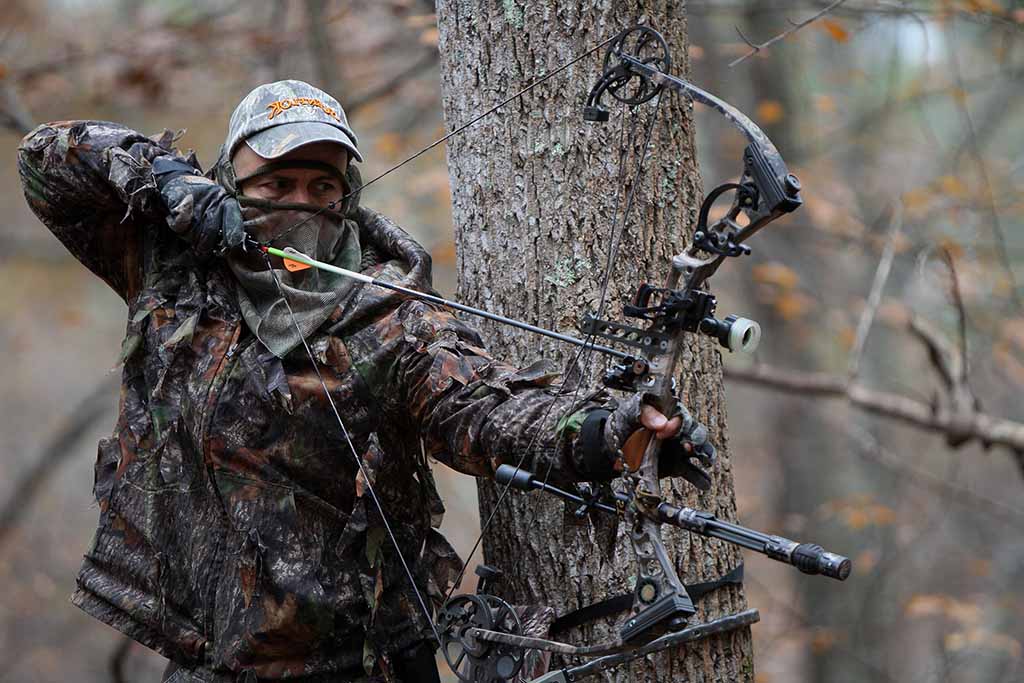

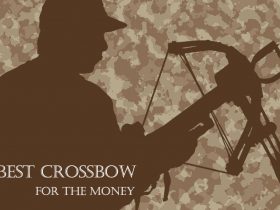
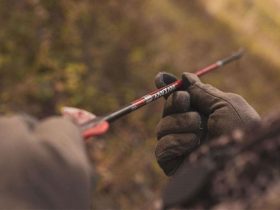
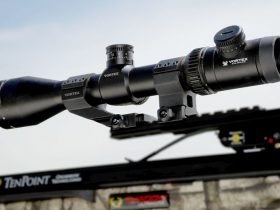
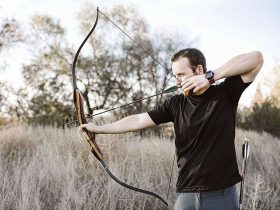
Leave a Reply